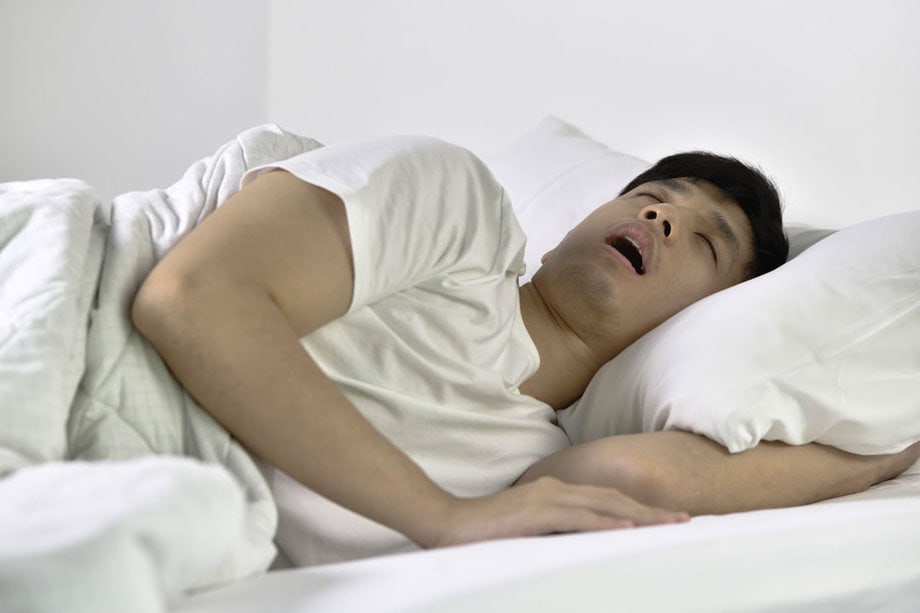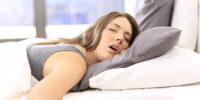What Is Obstructive Sleep Apnea And How Is It Different From Central Sleep Apnea?

Sleep apnea is a common sleep disorder characterized by repeated interruptions in breathing during sleep. There are two main types of sleep apnea: obstructive sleep apnea (OSA) and central sleep apnea (CSA). While both conditions involve disrupted breathing patterns during sleep, they differ in their underlying causes and treatment approaches.
Obstructive sleep apnea occurs when the airway becomes partially or completely blocked, leading to breathing difficulties and disrupted sleep. This obstruction is often caused by relaxed throat muscles, excess weight, or structural abnormalities in the airway. Common symptoms of OSA include loud snoring, excessive daytime sleepiness, and frequent awakenings during the night.
On the other hand, central sleep apnea is characterized by a failure of the brain to send proper signals to the muscles that control breathing. This results in a lack of effort to breathe, rather than a physical obstruction in the airway. Symptoms of CSA may include shortness of breath, irregular breathing patterns, and difficulty staying asleep.
Understanding the differences between obstructive sleep apnea and central sleep apnea is crucial for proper diagnosis and treatment. In this article, we will explore the definitions, symptoms, causes, diagnosis, and treatment options for both types of sleep apnea in detail.
Key Takeaways
- Obstructive sleep apnea (OSA) occurs when the airway becomes blocked, while central sleep apnea (CSA) is caused by a failure of the brain to send proper signals to the breathing muscles.
- Symptoms of OSA include loud snoring, excessive daytime sleepiness, and frequent awakenings during the night, while symptoms of CSA may include shortness of breath, irregular breathing patterns, and difficulty staying asleep.
- OSA can be caused by factors such as obesity, smoking, alcohol consumption, and anatomical factors, while CSA is typically associated with conditions like heart failure, stroke, and certain medications.
- Diagnosis of OSA involves assessing the frequency and duration of breathing pauses during sleep using tools like polysomnography, while diagnosis of CSA is typically made through a sleep study. Treatment options for OSA may include CPAP machines, oral appliances, weight loss, and surgical interventions, while treatment options for CSA may include addressing the underlying cause, positive airway pressure therapy, or medication.
Definition and Symptoms of Obstructive Sleep Apnea
Obstructive sleep apnea is a disorder characterized by repetitive episodes of partial or complete upper airway obstruction during sleep, resulting in disrupted breathing and symptoms such as loud snoring, daytime fatigue, and morning headaches.
These episodes occur when the muscles in the back of the throat fail to keep the airway open, leading to breathing pauses or shallow breathing.
The obstruction can last for a few seconds to several minutes, causing oxygen levels in the blood to drop and carbon dioxide levels to rise. This triggers the brain to briefly awaken the person from sleep in order to restore normal breathing. However, these awakenings are often so brief that the person may not even be aware of them.
The disrupted sleep patterns can lead to excessive daytime sleepiness, poor concentration, and an increased risk of accidents.
Causes and Risk Factors of Obstructive Sleep Apnea
Caused by factors such as obesity, smoking, and alcohol consumption, obstructive sleep apnea is a condition characterized by pauses in breathing during sleep.
- Obesity: Excess body weight can lead to the accumulation of fat in the upper airway, causing it to become narrowed and obstructed during sleep.
- Smoking: Smoking damages the respiratory system and increases inflammation in the airways, making them more prone to collapse during sleep.
- Alcohol consumption: Alcohol relaxes the muscles in the throat, which can lead to airway obstruction and breathing difficulties during sleep.
- Anatomical factors: Certain physical characteristics such as a large neck circumference, a narrow throat, or a recessed chin can contribute to the narrowing of the airway and increase the risk of obstructive sleep apnea.
Identifying and addressing these causes and risk factors is crucial in managing and treating obstructive sleep apnea to improve sleep quality and overall health.
Diagnosis and Screening for Obstructive Sleep Apnea
The diagnosis and screening for obstructive sleep apnea often involve assessing the frequency and duration of breathing pauses during sleep.
One common diagnostic tool is polysomnography, which measures various physiological parameters such as brain waves, eye movements, and muscle activity. This test helps determine the severity of sleep apnea by quantifying the number of apneas and hypopneas per hour of sleep.
Additionally, home sleep apnea testing devices are available for patients who prefer to undergo the assessment in the comfort of their own homes.
Screening questionnaires, such as the Epworth Sleepiness Scale, are also utilized to assess daytime sleepiness and aid in the identification of individuals at risk for obstructive sleep apnea.
Once diagnosed, treatment options can be explored to manage the condition and improve overall sleep quality and health.
Treatment Options for Obstructive Sleep Apnea
Treatment options for obstructive sleep apnea typically involve the use of continuous positive airway pressure (CPAP) machines, oral appliances, weight loss, and in some cases, surgical interventions.
CPAP machines are the most common treatment method and work by delivering a constant stream of air pressure through a mask, keeping the airway open during sleep.
Oral appliances, such as mandibular advancement devices, are another option and work by repositioning the jaw to prevent airway obstruction.
Weight loss is recommended for overweight individuals as excess weight can contribute to the narrowing of the airway.
In cases where other treatments are ineffective or not suitable, surgical interventions may be considered. These can include procedures such as uvulopalatopharyngoplasty (UPPP), which removes excess tissue from the throat, or maxillomandibular advancement, which repositions the jaw to widen the airway.
Ultimately, the treatment plan for obstructive sleep apnea depends on the severity of the condition, individual patient factors, and the preferences of the patient and healthcare provider.
Definition and Symptoms of Central Sleep Apnea
Central sleep apnea is a sleep disorder characterized by the brain’s failure to send proper signals to the muscles that control breathing, resulting in periods of interrupted or shallow breathing during sleep. Unlike obstructive sleep apnea, which is caused by a physical blockage of the airway, central sleep apnea occurs due to a lack of communication between the brain and the respiratory muscles.
This can be caused by various factors such as heart failure, stroke, or certain medications. Symptoms of central sleep apnea include frequent awakenings during the night, excessive daytime sleepiness, morning headaches, and difficulty concentrating. Diagnosis is typically made through a sleep study, which measures the frequency and duration of breathing pauses during sleep.
Treatment options for central sleep apnea may include addressing the underlying cause, using positive airway pressure therapy, or medication to stimulate breathing.
Causes and Risk Factors of Central Sleep Apnea
Central sleep apnea is a sleep disorder characterized by periods of interrupted or absent breathing during sleep, caused by a lack of respiratory effort.
The causes and risk factors of central sleep apnea can vary, but medical conditions such as heart failure and stroke are known to be associated with its development.
Additionally, certain medications and exposure to high altitude can also contribute to the occurrence of central sleep apnea.
Medical conditions such as heart failure and stroke
Medical conditions such as heart failure and stroke are often associated with obstructive sleep apnea, a condition characterized by repeated episodes of partial or complete blockage of the upper airway during sleep.
Obstructive sleep apnea occurs when the muscles in the throat fail to keep the airway open, leading to interruptions in breathing and a decrease in blood oxygen levels.
These medical conditions can contribute to the development or worsening of obstructive sleep apnea due to various factors.
For instance, heart failure can result in fluid accumulation in the body, including the neck area, which can narrow the airway and increase the risk of apnea episodes.
Similarly, stroke can cause damage to the brain regions responsible for controlling breathing, leading to impaired muscle function and increased vulnerability to airway blockages during sleep.
Understanding the association between these medical conditions and obstructive sleep apnea is crucial for effective management and treatment of both conditions.
Medications and high altitude
Obstructive sleep apnea (OSA) and central sleep apnea (CSA) are two distinct types of sleep apnea characterized by different underlying causes. While medical conditions such as heart failure and stroke are often associated with both types, there are other factors that differentiate them.
One such factor is the role of medications and high altitude. Medications such as sedatives and opioids can contribute to OSA by relaxing the muscles in the throat, leading to airway obstruction during sleep. On the other hand, high altitude can exacerbate CSA due to the decreased oxygen levels, which can disrupt the brain’s control over breathing.
Understanding these additional influences on OSA and CSA is crucial for accurate diagnosis and appropriate treatment strategies tailored to each patient’s specific needs.
Diagnosis and Screening for Central Sleep Apnea
Diagnosis and screening for central sleep apnea can be achieved through various methods that assess the presence and severity of breathing disturbances during sleep.
Polysomnography, commonly referred to as a sleep study, is considered the gold standard for diagnosing central sleep apnea. This test measures various physiological parameters during sleep, including brain waves, eye movements, muscle activity, heart rate, and breathing patterns. It can detect the absence of respiratory effort, which is a hallmark of central sleep apnea.
Additionally, a respiratory polygraphy test can be used as a simplified alternative to polysomnography, measuring only a subset of parameters. This method is often used in patients who are unable to undergo a full sleep study.
Furthermore, screening questionnaires may be utilized to identify individuals who are at a higher risk for central sleep apnea and require further evaluation. These questionnaires typically assess symptoms such as daytime sleepiness, fatigue, and snoring.
Overall, a combination of objective measurements and subjective assessments is necessary for an accurate diagnosis and screening of central sleep apnea.
Treatment Options for Central Sleep Apnea
Treatment options for central sleep apnea include positive airway pressure therapy, medications, and addressing underlying medical conditions. Positive airway pressure therapy is the first-line treatment for central sleep apnea. It involves wearing a mask over the nose or mouth during sleep, which delivers a continuous stream of air to keep the airway open. This helps prevent episodes of apnea and improves oxygen levels. Medications such as acetazolamide or theophylline may be prescribed to stimulate breathing and improve respiratory control. However, the effectiveness of these medications is limited and they are typically used in combination with other treatments. Addressing underlying medical conditions such as heart failure or kidney disease is also important in managing central sleep apnea. By treating the underlying cause, the symptoms of central sleep apnea may improve or resolve completely.
| Treatment Options | Description | ||
|---|---|---|---|
| Positive Airway Pressure Therapy | Involves wearing a mask over the nose or mouth during sleep, delivering a continuous stream of air to keep the airway open. | ||
| Medications | Acetazolamide or theophylline may be prescribed to stimulate breathing and improve respiratory control. | ||
| Addressing Underlying Medical Conditions | Treating the underlying cause of central sleep apnea, such as heart failure or kidney disease. | {finish the sentence} This can help improve the overall management and control of central sleep apnea symptoms. |
Frequently Asked Questions
How does obesity affect the risk of developing obstructive sleep apnea?
Obesity is a significant risk factor for developing obstructive sleep apnea (OSA). Excess weight can lead to increased fat deposits in the upper airway, narrowing the passage and causing breathing difficulties during sleep.
What is the difference between obstructive sleep apnea and snoring?
Obstructive sleep apnea (OSA) is a disorder characterized by repetitive episodes of complete or partial upper airway obstruction during sleep, leading to interrupted breathing. Snoring, on the other hand, is a common symptom of OSA but not all snorers have OSA.
Can obstructive sleep apnea be cured?
Obstructive sleep apnea cannot be cured, but it can be effectively managed. Treatment options include lifestyle changes, such as weight loss, and medical interventions, such as continuous positive airway pressure (CPAP) therapy or surgery.
Are there any natural remedies or lifestyle changes that can help alleviate symptoms of obstructive sleep apnea?
Natural remedies and lifestyle changes such as weight loss, regular exercise, avoiding alcohol and sedatives, maintaining a consistent sleep schedule, and sleeping on your side can help alleviate symptoms of obstructive sleep apnea.
What are the potential complications of untreated central sleep apnea?
Potential complications of untreated central sleep apnea include increased risk of cardiovascular diseases such as hypertension, heart failure, and stroke. It may also lead to cognitive impairments, decreased quality of life, and an increased likelihood of accidents due to daytime sleepiness.











